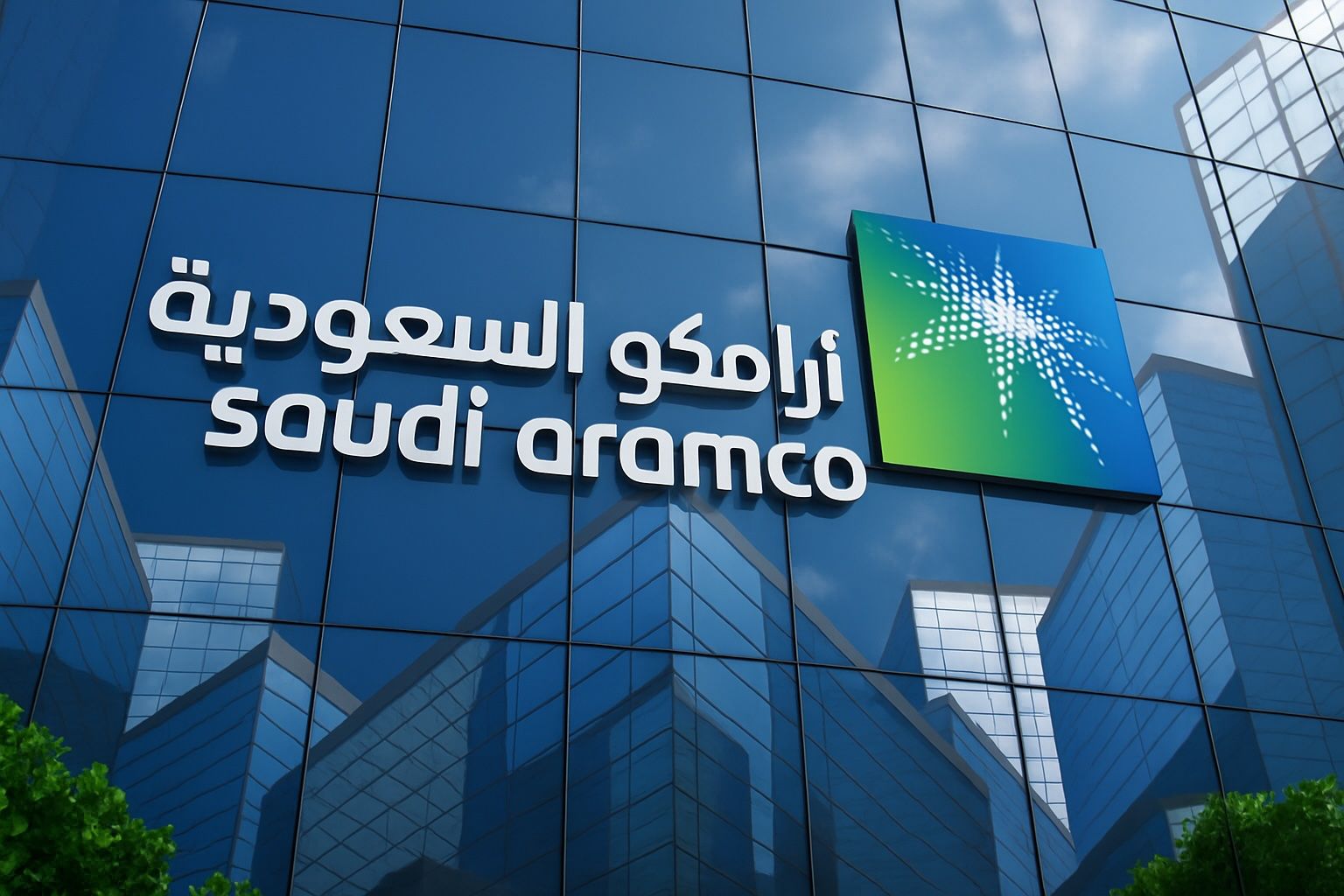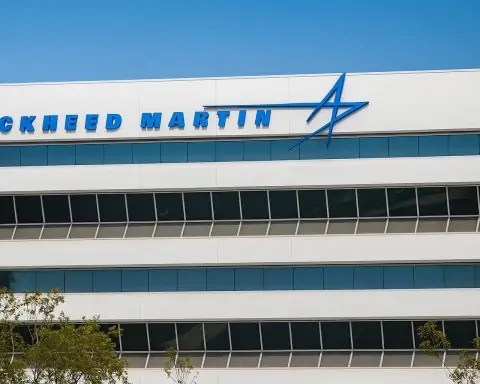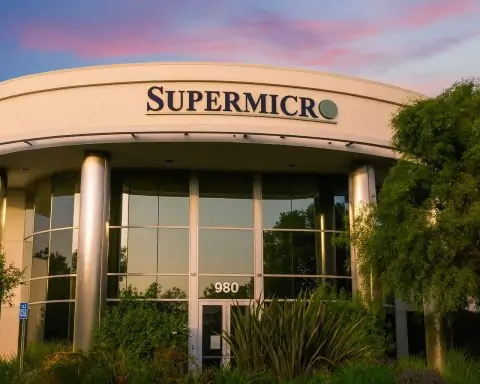- Share price and YTD performance: Aramco shares trade around SR 24.6 at end‑Sept 2025, roughly 12 % higher year‑to‑date and down ~9 % from a year ago [1]. The stock briefly surged >3 % on 17 Sept after a long period of weakness [2].
- Valuation: The company trades at about 16× forward earnings with a price‑to‑book ratio of 4× [3]. Its enterprise‑value‑to‑EBITDA multiple (~7.5×) is higher than most Western oil majors but similar to other Gulf peers [4].
- Dividend yield and policy: Aramco paid a hefty $124 bn in dividends for 2024 but signalled a nearly 30 % reduction to $85.4 bn in 2025; analysts forecast the yield falling to ~5 % yet still among the highest in the sector [5] [6].
- Market‑moving news (Sept 30 – Oct 1 2025): Oil prices dropped after reports that OPEC+ may raise output further, then steadied when the group denied a 500 k bpd hike and disruptions in Russia grabbed attention [7]. Aramco’s stock drifted sideways during this volatility.
- Strategic moves: The company raised $3 bn via sukuk at attractive spreads [8], signed an $11 bn lease/leaseback deal for its Jafurah gas project [9], and invested in liquefied natural gas (LNG) through MidOcean’s purchase of 20 % of Petronas’ stake in LNG Canada [10]. It is also pioneering iron‑vanadium flow batteries to decarbonise remote gas operations [11].
- Future outlook: CEO Amin Nasser expects oil demand in the second half of 2025 to be more than two million barrels per day higher than the first half [12]. He stresses hydrocarbon resilience and notes that Aramco is investing in new energies and AI [13].
- Risks: Declining oil prices from oversupply, geopolitical tensions (Russia‑Ukraine, Middle East), ESG pressures and potential regulatory reforms remain key risks. OPEC+’s gradual unwinding of production cuts could weigh on oil prices [14].
- Peer comparison: Aramco’s valuation is above Exxon and Shell but below ADNOC and Petrobras. Dividend yield remains top‑tier. Its strategy emphasises gas and petrochemicals expansion and moderate energy transition investments.
2025 YTD Stock Performance
Saudi Aramco’s stock (Tadawul: 2222.SR) started 2025 in the SR 22 range and rose above SR 24 by late September, giving a year‑to‑date gain of roughly 12 % [15]. FinanceCharts data show the share price closing at SR 24.62 on 30 September, down 1.48 % from the previous day but up 3.45 % over the past 30 days [16]. Over the last twelve months the shares are still down about 9 % [17], reflecting investors’ concerns about lower oil prices and a large dividend cut.
The stock is trading around 16× forward earnings and about 4× book value [18]—premium multiples relative to Western oil majors. The dividend yield remains substantial (~7 % for 2024) [19] but is projected to drop to around 5 % after the announced payout reduction [20].
Recent News and Market Catalysts (Sept 30 – Oct 1 2025)
OPEC+ Policy and Oil Price Volatility
At the end of September 2025 oil markets were buffeted by rumours that OPEC+ might raise production by up to 500 k bpd in November. The alliance had already increased quotas by over 2.5 million barrels per day since April [21]. Reports of a further hike triggered a sharp sell‑off, but an OPEC post dismissed the rumours, and the market refocused on supply disruptions from Ukrainian attacks on Russian infrastructure [22]. Analysts warned that oversupply remains a threat: a Reuters poll of 32 analysts projected Brent crude averaging $67.61 per barrel in 2025, with Saxo Bank’s Ole Hansen describing a “tug of war” between rising supply and potential disruptions [23].
For Aramco, OPEC+ policy is crucial. CEO Amin Nasser recently said additional production increases from the group will benefit Aramco, which has around 3 million barrels per day of spare capacity and can quickly ramp up output [24].
Corporate Actions and Expansion
- $3 billion sukuk issuance (Sept 18 2025) – Aramco successfully raised $3 bn through a two‑tranche sukuk, achieving a negative new‑issue premium. CFO Ziad Al‑Murshed said the demand underscored “global investor confidence” in Aramco’s financial resilience [25].
- Jafurah gas midstream deal (Aug 14 2025) – Aramco completed an $11 bn lease‑and‑leaseback transaction for its Jafurah gas processing facilities with a consortium led by Global Infrastructure Partners. The deal helps finance development of Saudi Arabia’s largest unconventional gas field, which will increase the Kingdom’s gas production by 60 % by 2030 [26]. Nasser called Jafurah “a cornerstone of our gas expansion” and highlighted foreign investors’ confidence [27].
- LNG expansion through MidOcean (Sept 30 2025) – MidOcean Energy, backed by EIG and Aramco, agreed to purchase 20 % of Petronas’ interest in LNG Canada (a Shell‑led project) and associated Montney shale assets [28]. LNG Canada shipped its first cargo in June and offers a cost advantage because Canadian gas trades at a discount; owners aim to double capacity to 28 million tonnes per year [29]. This deal signals Aramco’s intent to become a major LNG supplier.
- Energy‑transition initiatives – Aramco deployed the world’s first iron‑vanadium flow battery to store solar energy for remote gas wells. Senior VP Ali Al‑Meshari said the technology enhances energy efficiency and reduces emissions across operations [30], underscoring Aramco’s nascent investment in renewable solutions [31].
Stock‑specific Events
- Price spike on Sept 17 2025 – Aramco shares surged 3.21 % to SR 24.10—their sharpest increase in two years—driving the Tadawul index above 10,600 points [32]. The rally followed a broad market rebound and possibly positive sentiment around the Jafurah deal.
- Dividend reduction concerns (March 4 2025) – Aramco signalled that dividends would fall nearly 30 % to $85.4 bn in 2025. Analysts at Citi and JPMorgan said the cut was unavoidable given a softer oil market but still leaves Aramco with one of the sector’s highest yields [33] [34].
Analyst and Executive Insights
- Amin Nasser (CEO) – On announcing half‑year 2025 results, Nasser highlighted that Aramco’s “resilience and ongoing robustness in profitability” proved the company could withstand volatile markets. He projected that oil demand in the second half of 2025 will be more than two million barrels per day higher than the first half [35] and reaffirmed that hydrocarbons will continue to play a vital role while Aramco invests in new energies and AI [36].
- Ziad Al‑Murshed (CFO) – After the sukuk issuance, Al‑Murshed said the pricing achieved a negative new‑issue premium, reflecting “strong confidence” in the company’s creditworthiness [37]. Regarding dividend cuts, he explained that prior performance‑linked dividends paid in 2024 covered two years’ payments, implying that future payouts will normalise [38].
- Ole Hansen (Saxo Bank) – Hansen noted that oil prices are caught in a tug of war between a potential supply glut from OPEC+ and non‑OPEC output and possible geopolitical disruptions [39].
- Sugandha Sachdeva (SS WealthStreet) – She said U.S. crude inventory drawdowns are slowing, tempering bullish sentiment, and highlighted the risk of a U.S. government shutdown and weak Asian factory activity weighing on demand [40].
- Milad Azar (XTB MENA) – Azar remarked that the Tadawul index’s momentum is buoyed by non‑oil sectors, but oil price volatility and stalled negotiations on Aramco’s potential acquisition of a stake in Repsol’s renewables arm led to profit‑taking [41].
Future Outlook: Oil Demand, OPEC+ Policy and Energy Transition
The global oil market is moving into a potentially oversupplied phase. A Reuters poll of analysts expects Brent crude to average $67.61 per barrel in 2025, with many forecasting a surplus as non‑OPEC supply grows and OPEC+ unwinds cuts [42]. Nevertheless, the same survey stresses that geopolitical risks—sanctions on Russia, Middle East tensions—could keep a floor under prices.
OPEC+ will discuss further quota increases on Oct 5 2025; it has already raised production by more than 2.5 million barrels/day since April and may add at least 137 k bpd in November [43]. For Aramco this is a mixed blessing: greater volumes could support revenue, but a supply glut could pressure prices and weigh on profitability.
Aramco’s strategic focus remains on safeguarding hydrocarbons while gradually diversifying. The Jafurah gas project will boost natural gas output by 60 % and feed industries such as AI data centres and petrochemicals [44]. Its LNG expansion via MidOcean may help offset long‑term declines in oil demand. The company’s incremental investments in renewable technologies, like iron‑vanadium flow batteries [45], illustrate a cautious approach to the energy transition without jeopardising core cash flows.
Dividend Policy and Expected Yield
Aramco’s dividend policy consists of a base dividend (90.89 billion SAR per quarter) and a performance‑linked component tied to free cash flow. After paying $124 bn in dividends for 2024, the company announced it would distribute $85.4 bn in 2025, implying a nearly 30 % cut [46]. Analysts at Citi said the reduction was inevitable given a “challenging outlook for oil markets,” while JPMorgan forecast the dividend yield would decline to around 4.9 %–5 % but still offer attractive cash returns [47]. The payout remains supported by robust free cash flow and low leverage.
Dividend distributions in 2025 are scheduled for Aug 19 and Aug 28 according to Argaam’s corporate calendar [48]. With total free cash flow expected to remain strong, Aramco is likely to sustain high payouts relative to peers though investors should expect more modest growth.
Risks and Challenges
- Oil Price Volatility: A potential oversupply from OPEC+ increases and surging non‑OPEC production could push Brent into the mid‑$60s or lower [49]. A prolonged price decline would hurt Aramco’s cash flow and limit dividends.
- Geopolitical and Regulatory Risks: Middle East tensions, Russian sanctions, and potential conflict escalation could disrupt supply and demand. Domestically, Saudi authorities are considering lifting the cap on foreign ownership of stocks, which could lead to volatility as large positions adjust [50].
- Energy Transition & ESG: Global decarbonisation is accelerating. Should ESG pressures intensify or carbon prices rise sharply, Aramco’s long‑term valuation could be impaired. However, the company is investing modestly in renewables and low‑carbon technologies to mitigate this risk [51].
- Operational Risks: Large-scale projects like Jafurah and LNG Canada require execution excellence. Cost overruns or delays could erode returns.
- Currency and Dividend Policy: For foreign investors, Saudi‑riyal movements against the dollar and changes in withholding tax could affect total returns. A further dividend cut beyond the announced reduction is a downside risk.
Comparison with Global Energy Peers
| Company | Ticker | 2025 YTD Performance | Forward P/E | EV/EBITDA | Dividend Yield | Strategic Positioning |
|---|---|---|---|---|---|---|
| Saudi Aramco | 2222.SR | +12 % YTD [52] | 16× [53] | 7.5× [54] | ~5–7 % (after cut) [55] [56] | World’s largest oil exporter; focusing on maximising oil output and expanding gas & LNG; small-scale renewables investments. |
| Exxon Mobil | XOM | ~flat YTD (shares around US$115). | ~11× | ~7× | ~3.5 % | Emphasising upstream growth in Guyana and Permian; modest low‑carbon investments. |
| Shell | SHEL LN | +8 % YTD. | ~8.5× | ~5.5× | ~4 % | Balancing oil & gas with big LNG and chemicals portfolio; accelerating renewables and power trading. |
| Abu Dhabi National Oil Co. (ADNOC) Gas | ADNOCG.AD | +5 % YTD. | ~14× | ~9× | ~4.5 % | Focused on gas processing and exports; heavy state backing; exploring carbon capture and hydrogen. |
| Petrobras | PETR4.SA | –6 % YTD. | ~5× | ~3.5× | >8 % | Large Brazilian offshore producer; high dividend yield but subject to political interference and high debt. |
Figures represent approximate performance up to 30 Sept 2025; YTD data for peers compiled from market reports.
Valuation multiples and yields are approximate based on reported earnings and dividends in 2025; they may differ depending on source and date.
Compared with Western majors, Aramco commands a higher valuation and offers a higher dividend yield. This reflects the company’s low upstream costs, dominant market share and government backing, but also factors in the lack of diversification and high dependency on oil price and Saudi policy. Exxon and Shell trade on lower multiples and smaller yields yet have broader geographical diversification. ADNOC Gas is similar to Aramco in being state‑controlled with high growth ambitions, though its focus is on gas. Petrobras is cheaper and offers the highest yield but carries significant political risk.
Conclusion
Saudi Aramco remains a juggernaut of the global energy sector. In 2025 its shares have rebounded modestly but still lag the index over the past year. With OPEC+ unwinding cuts and oil supply expected to outstrip demand, the commodity backdrop is less supportive than in previous years. Nonetheless, Aramco’s world‑leading production, low costs and robust balance sheet enable it to maintain high dividends and invest in strategic gas and LNG projects. Investors must weigh these strengths against the risks of volatile oil prices, regulatory changes and the long‑term energy transition. For those seeking high dividends and exposure to Saudi Arabia’s economic engine, Aramco remains compelling—but potential buyers should be prepared for a choppy ride and lower payouts ahead.
In summary, Saudi Aramco (Tadawul: 2222.SR) climbed about 12 % YTD by September 2025 while still showing a 9 % year-over-year drop [57]. The stock trades at roughly 16× forward earnings and offers a high dividend yield even after a planned 30 % cut [58]. Major catalysts included an $11 billion gas midstream deal and a $3 billion sukuk issuance that bolstered liquidity [59] [60]. CEO Amin Nasser expects oil demand to climb in H2 2025 and maintains that hydrocarbons will remain vital, though Aramco is cautiously investing in new energies [61]. Key risks stem from potential oversupply as OPEC+ unwinds cuts, geopolitical tensions, and the global energy transition. Overall, Aramco offers an enticing dividend and low-cost production base but faces uncertainties that warrant careful monitoring.
References
1. www.argaam.com, 2. www.arabnews.pk, 3. www.argaam.com, 4. www.argaam.com, 5. www.reuters.com, 6. www.reuters.com, 7. www.reuters.com, 8. www.aramco.com, 9. www.aramco.com, 10. www.reuters.com, 11. www.aramco.com, 12. www.aramco.com, 13. www.aramco.com, 14. www.reuters.com, 15. www.argaam.com, 16. www.financecharts.com, 17. www.argaam.com, 18. www.argaam.com, 19. www.argaam.com, 20. www.reuters.com, 21. www.reuters.com, 22. www.reuters.com, 23. www.reuters.com, 24. www.reuters.com, 25. www.aramco.com, 26. www.aramco.com, 27. www.aramco.com, 28. www.reuters.com, 29. www.reuters.com, 30. www.aramco.com, 31. www.aramco.com, 32. www.arabnews.pk, 33. www.reuters.com, 34. www.reuters.com, 35. www.aramco.com, 36. www.aramco.com, 37. www.aramco.com, 38. www.reuters.com, 39. www.reuters.com, 40. www.reuters.com, 41. www.reuters.com, 42. www.reuters.com, 43. www.reuters.com, 44. www.aramco.com, 45. www.aramco.com, 46. www.reuters.com, 47. www.reuters.com, 48. www.argaam.com, 49. www.reuters.com, 50. www.reuters.com, 51. www.aramco.com, 52. www.argaam.com, 53. www.argaam.com, 54. www.argaam.com, 55. www.reuters.com, 56. www.reuters.com, 57. www.argaam.com, 58. www.reuters.com, 59. www.aramco.com, 60. www.aramco.com, 61. www.aramco.com








